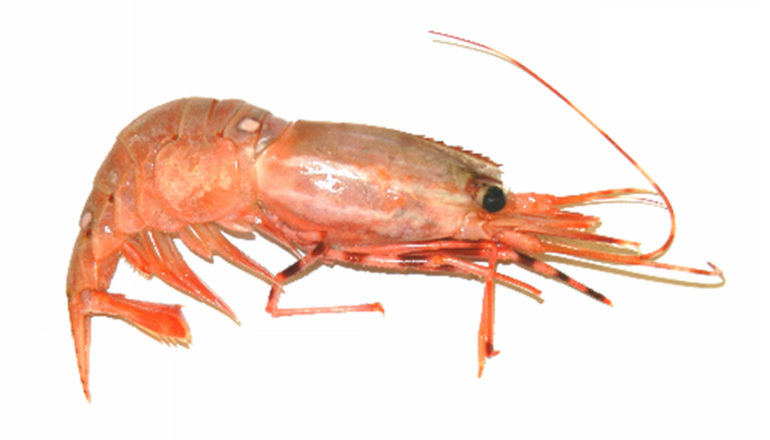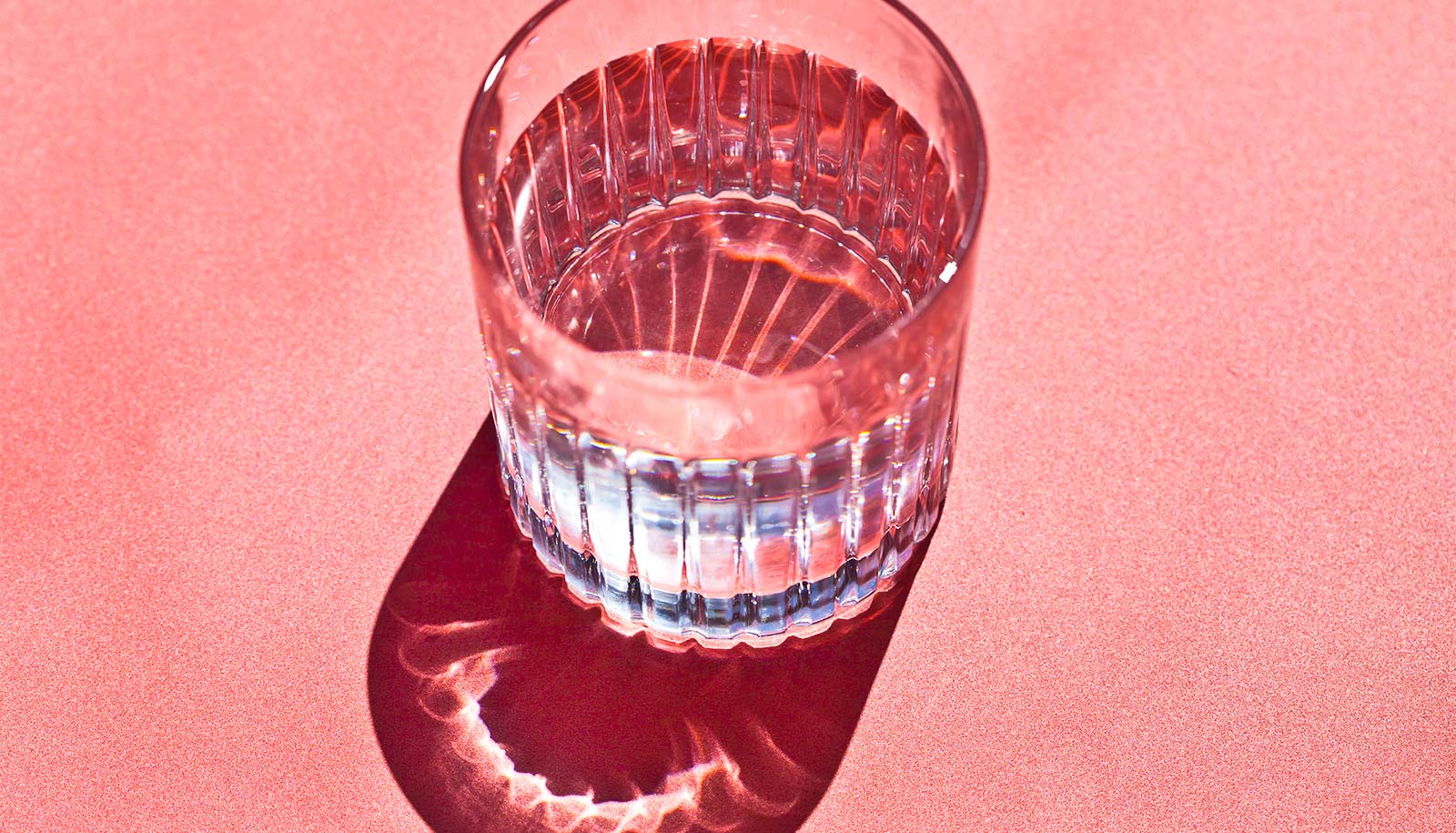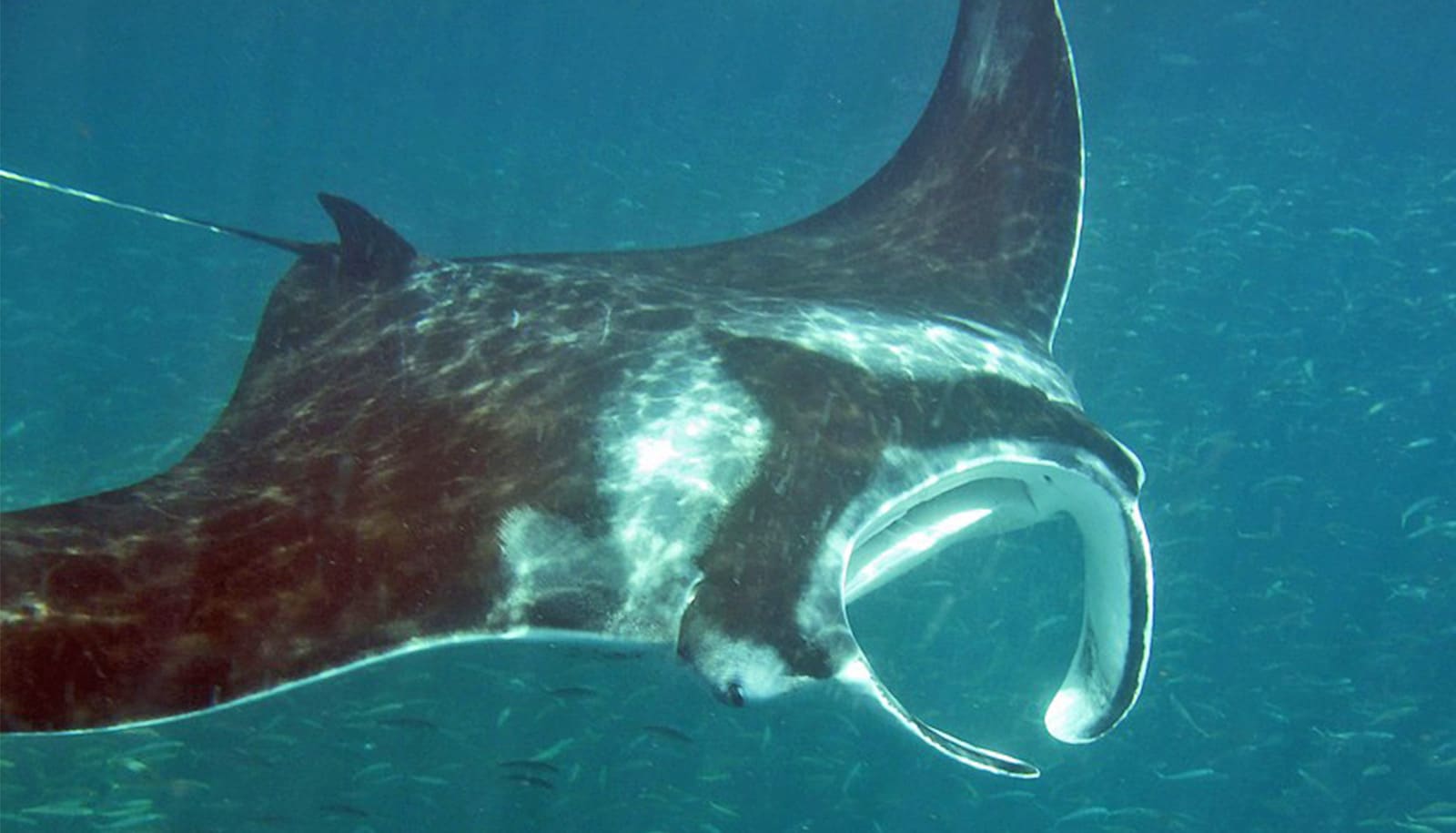Some shrimp that live deep in the ocean are able to thrive in extremely hot water. To find out how, researchers took a very close look at their exoskeleton.
The team compared the exoskeletons of the deep-sea shrimp Rimicaris exoculata and the shallow-dwelling shrimp Pandalus platyceros. The deep-sea species lives 2,000 meters below the ocean surface in volcanic hydrothermal vents where temperatures can exceed 400 degrees Celsius. The other species lives just below the ocean surface.
“A biological species surviving in that kind of extreme environment is a big deal,” says Vikas Tomar, associate professor of aeronautics and astronautics at Purdue University. “And shrimp are a great test case for evolution because you can find different species all over the world living at various depths and with a range of adaptation requirements.”
Two materials: organic and inorganic
The researchers probed the interface between two key components of the exoskeletons: a protein called chitin and a bone-like mineral called calcite. How these two types of materials—one organic and the other inorganic—behave at their interface is critical to determining how the exoskeleton performs.

Ten exoskeleton specimens were studied, and experimental analyses were performed using laboratory techniques including scanning electron microscopy and electron diffraction spectroscopy, revealing details about the structure and chemical composition.
The exoskeletons of both species of shrimp possess the same microstructures: the chitin, calcite, and other components are arranged in a layered helicoidal structure that resembles a spiral staircase. A comparison of the two species, however, showed differences in the density of the structures, thickness of the layers, and mineral content. The deep-sea shrimp’s exoskeleton was found to possess a more densely packed structure.
Surprisingly, the exoskeleton of the surface shrimp is about 10 times stronger than the exoskeleton of the deep-sea shrimp. “Mechanistically, you would expect that when it is compacted it becomes stronger, but it is actually weaker after compaction,” Tomar says.
Soft vs. hard
The new recent research probed what happens at the interface between the chitin and calcite and how these mechanisms affect exoskeleton performance. This interface helps to determine how the structures transfer stress.
Findings showed the deep-sea exoskeleton is softer, yet capable of withstanding temperature and pressure extremes. The surface-shrimp exoskeleton is harder and better able to protect against predators.
“Even though they have the same basic microstructure, they are completely different materials,” Tomar says.
Information about the interface viscosity obtained using molecular simulations of the interacting materials allows for more accurate modeling of how polymer-ceramic composites deform due to strain. The researchers developed a “viscoplastic law,” or mathematical equations for such an interface.
It’s not about strength
Conventional models for polymer-ceramic composites fall short because they key on the peak strength, whereas the materials are more likely to fail by high strain, or being stretched.
[related]
“There are failure theories that we use, but they predict the failures in terms of strength,” Tomar says. “In the case of these materials it is the strain that’s most important, so you cannot exceed a certain level of deformation without breaking.”
The findings, published online in the journal Acta Biomaterialia, shed light on how water plays a vital role in providing strength to the molecular structure of the exoskeletons. The researchers also created an “interface database” to model how a particular composite material will perform given its composition, microstructure and type of interface.
In related research, the team is working with collaborators at the Vienna University of Technology to study the interface between collagen and human bone and how bone deforms over time. That research was detailed in April in the Materials Research Society Bulletin. The findings could help to better model the behavior of medical implants.
The National Science Foundation funded the study.
Source: Purdue University


